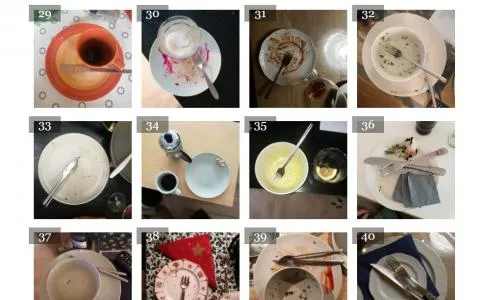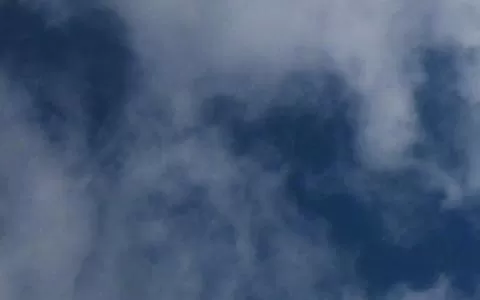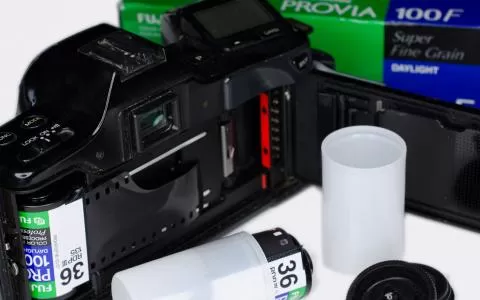When you start shooting digital, you may also start shooting dozens of thousands of images, and it's easy to be tempted to clean out once in a while. Don't!
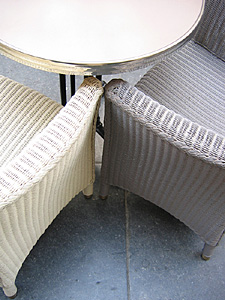
[Canon Powershot A80]
Pressing the garbage bin symbol on the camera. Pressing delete on the keyboard. Dropping the file on the vortex of the trashcan on your desktop. It's easy and very tempting, but I advice strongly against deleting ANY of your digital images EVER!
There are several good reasons to keep them eternally, but the most important one is, that you might need them some day.
I just read a story about British photographer Tom Stoddart whose best earning picture ever was one that he had never given a chance and very likely would have deleted. But he didn't, and one day an advertisement agency called and needed a picture exactly like that. And the rest is history... You could see the picture by going
This was not the most fantastic image, although quite nice. I would never have ditched it myself, but quite a few photographers with a high quality bar could have deleted an image like it.
They don't eat bread
We often say here in Denmark, that stuff you just stow away "don't eat bread" meaning that it doesn't require any effort, any money or anything else to have it stored. That saying applies very well on digital images. You have barely no handling, the images don't need any nursing and they essentially just take up some space on a hard disk or a DVD.
There is no reason not to save them.
Hard disk space
Hard disk space is about the cheapest computer-commodity you can buy, and the amount of hard disk space you have at any time is never enough. Trust me on this. I have been in the business for almost three decades, and in that period hard disks have basically doubled in capacity while the price has been cut to the half... every 12-18 months! It's a classic Moore's Law phenomenon. Last year's average disk has at least 1½ times the capacity of this year's model and costs less. It has to follow certain form factors, but if that wasn't the case, it would probably be physically smaller too. You should always -- ALWAYS -- buy bigger than you think you need. As big as you can stuff in your computer or case, basically.
Addendum December 2013
Notice how this article from 2006 mentions 200 Gb external disks and counts capacity in Gigabytes and not in Terabytes? Well, it's just a proof that it's spot on when it comes to storage capacity. External as well as internal hard disk units are now measured in Tb, and I dare you to find an current external USB connected hard drive that's 200 Gb or less. The smallest one I could find on my local hardware page was 320 Gb and cost less than 50 USD, and there were 15 (fifteen) 4 Tb units at ridiculously low prices, typically in the 150-200 USD range.
Addendum September 2020
To prove my point about hard drive space, I now have a 10 TB NAS attached to my network. Ten terabytes! For one man! And I love the fact that I can store almost endless copies of things, and not have to worry about space - for now. Come back in a few years, and I'll have more space.
My own workflow and storage process
I shoot in RAW and JPG, meaning that my cameras as far as possible deliver one high-rez, full qualilty RAW-image and one medium quality, small-size JPG. Whenever I come back from a shoot I transfer these files from the memory cards to the computer. I have a separate image server with a separate 200 Gigabyte hard disk just for images. This disk is divided into folders, one for each month. Each of these folders have subfolders -- one for each shoot. I give the subfolders meaningful names with subject, location, people's names etc. in the folder name.
I keep all my pictures in the original version and NEVER overwrite any of the originals.
I actually write-protect them on the image hard drive so that I avoid overwriting or deleting them by accident. I keep my images named in sequence, and each single image has its own name, until I turn the 10,000 image mark on a camera, but I have only done that twice yet. On the Nikon D200 I can use the custom-set filename to get around this. Right now I'm shooting the MJ0_nnnn-range. When I get to MJ0_9999 I will just start on the MJ1_nnnn-range.
I keep the original filename all through my workflow. In this way I can easily track the picture back to its origin and find other pictures from the same shoot.
Mostly I also keep all EXIF-information in the picture, enabling myself and others to look into the technical details of the picture. Sometimes I select to get rid of the EXIF-information, and sometimes it gets lost in the editing process, but mostly I keep it there.
These images were all shot by mistake during an Ikea trip, bouncing the camera on one shoulder, candles, mugs and whatnot in both hands.
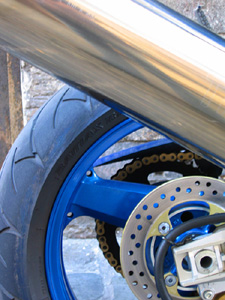
[Canon Powershot A80]
Backing up
Now, 200 Gigabytes might sound like a lot, but dozens of thousands of images can eat up 200 Gigabytes easily. And disks also fail, which is why I occasionally copy the images in bunches to DVD's, which I store. These DVD's hold about 6-7 Gigabytes, meaning that the whole collection can fit on about 30-40 disks. I still only delete from the 200 Gigabyte disk when I need the space, which is rarely. I often have extra copies of recent shoots on my laptop, but its 40 Gigabyte disk sets some limits to how much I can save there.
I am actually considering a spare 200 Gigabyte disk, which I can use as a backup for the other one. I use hard disk drawers for all my disks, and exchanging one for another is very easy. Another option is a USB- or firewire-based disk, which is basically a small 2.5" laptop-drive packed in a small USB- or firewire-connected box. I have a 40 Gigabyte USB-drive that I use when I travel. I copy images to my laptop, and the to the USB-drive, giving me two copies for security. But a 200 Gigabyte USB-drive is fairly expensive if you go for the laptop-type. Another option is a plain 3.5" drive. Those can be put in USB-boxes too, and at a very attractive price.
But no matter what: have copies! And store them on separate drives, preferably in separate computers -- or boxes. And burn your images to DVD's occasionally and store these separately, like in someone else's house.
I made a book
I even gathered some of my best erroneous shots in a small self-published book entitled "Misses". I like the pictures and I love the book. The images are crazy in a very nice way. And surprisingly good, actually. But that's of course my personal opinion. Look for yourself:
